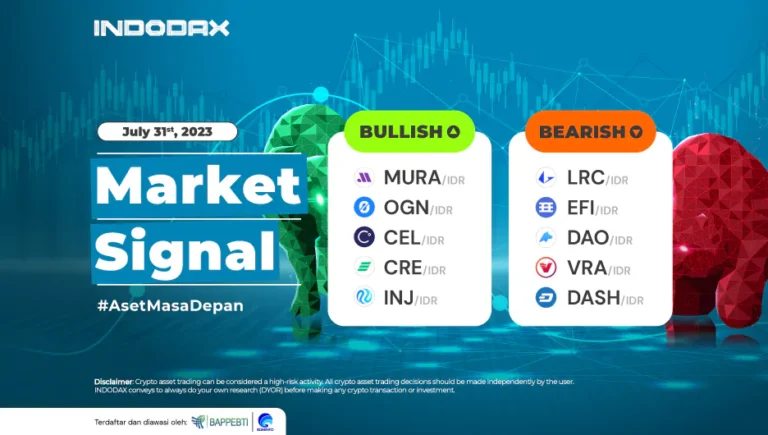Managing financial risk is important for a company to know when investing.
Related to this, the measure that can be used to measure this ability, one of which is the solvency ratio.
The solvency ratio can be used to observe a company’s opportunity as an investment issuer to generate profits in the long term.
Besides solvency, other measures that can be used for investment are liquidity and viability.
By understanding these three financial concepts, investors will obtain measurable information before investing.
In addition, it also aims to assist in effective financial management.
So, to learn more about solvency, types, and benefits, see the following reviews.
Definition of Solvency

Solvency is a ratio that shows the level of a company’s ability to pay its long-term obligations.
This will also show the level of financial soundness of the company.
The solvency ratio will show the ability of a company to pay off its debts using owned assets.
Therefore, it is very important to know this solvency ratio to obtain information regarding the long-term opportunities of a business/company.
On the other hand, solvency also plays a role in evaluating a company’s bankruptcy risk.
This is because the high or low solvency ratio of a company will greatly determine the company’s ability to escape the risk of bankruptcy.
Furthermore, it should also be noted that solvency, liquidity, and viability have their respective differences.
If liquidity is the ratio of the company’s current assets or cash to its non-current assets, then viability is the ratio between solvency and liquidity.
It should be noted that if a company’s liquidity is at least equivalent to its solvency, then the company is declared healthy.
However, if the company’s solvency exceeds its liquidity, its financial condition is in trouble.
Solvency Calculation Objectives
The purpose of calculating solvency is useful for monitoring a company’s or individual’s financial health regarding the ability to pay its debts.
In addition, it is also useful for evaluating a company’s ability to meet financial obligations within a certain period.
Therefore, the solvency calculation can later indicate the company’s ability to pay off its debts.
Not only that, the solvency calculation also has several other objectives, which are as follows:
- It is possible to assess investment/credit risk in a company.
- Providing important information for making financial decisions, including those related to providing additional financing.
- Describes the effectiveness of a company regarding the management of its financial obligations.
- Shows the risk of a company facing possible future changes in adverse financial conditions.
- It allows a company to improve its image in the market and increases investor and creditor confidence.
Types of Solvency and Their Formulas

As explained above, solvency measures a company’s ability to pay bills/debt in the long term.
On the other hand, solvency ratios consist of various types, and those commonly used are the Debt to Asset Ratio, Debt to Equity Ratio, and Leverage Ratio/Debt to Capital Ratio.
By understanding the types, investors can later assess a company’s ability to meet its financial obligations.
The following are the types of solvency that need to be known, including:
-
Debt to Asset Ratio
Debt-to-asset ratio or D/A ratio is a type of solvency that compares the number of unpaid liabilities with the company’s current total assets.
The calculation of assets here includes non-current assets, for example, machinery or buildings, and current assets, including cash, cash, or non-deposit bank savings.
The formula for calculating the solvency D/A ratio or debt-to-asset ratio is the amount of debt divided by the company’s total assets.
The formulation is as follows: D/A = debt/assets.
If the D/A Ratio is more than 1.0, the company’s solvency is in trouble.
-
Debt to Equity Ratio
Then there is the debt-to-equity ratio or D/E ratio, which compares the total liabilities to equity (total business operating capital).
If the debt ratio owned by the company is higher than its equity, the solvency could be better.
Meanwhile, the debt-to-equity Solvency formula ratio or D/E Ratio is almost the same as the D/A ratio.
However, the difference lies in equity accumulation because the optimal D/E ratio is 2.0.
The following is the formulation: D/E = debt/equity.
-
Leverage Ratio/Debt to Capital Ratio
Leverage ratio or debt to capital ratio (D/C ratio) is a type of solvency ratio that compares the amount of debt to the company’s current total assets, both those that have been converted into assets and are still in the form of stock valuations.
The formula for calculating the leverage ratio or debt-to-capital ratio is slightly different from the two previous types of formulas.
If you want to determine the D/C ratio, you need to divide total debt by total wealth, whether debt or equity.
In this case, there is no maximum limit for the D/C ratio, but the lower the nominal, the better.
The formulation is written as follows: D/C = debt/(debt + equity)
Benefits of Using Solvency Ratios
In financial ratio analysis, solvency plays a very important role and has great benefits.
This is because solvency will measure the company’s ability to pay off its obligations.
In addition, the solvency ratio will also assist company management in making financial decisions that are more measurable.
This is because by monitoring the solvency ratio regularly, later management can make estimates related to financial risk.
Not only that, management can decide if the company needs to find additional sources of financing or not at all.
Furthermore, the solvency ratio also plays a role in increasing the credibility and trust of the entity.
Thus, a company will maintain the trust of its investors because it is considered capable of paying its debts in the long term.
Conclusion
In finance, these three concepts, namely solvency, liquidity, and viability, are very important.
With a good understanding of the three concepts above, investors can make an appropriate analysis before investing.
By understanding these three financial concepts, investors will obtain measurable information before investing.
In addition, a good understanding of these three concepts can help in effective financial management.
It will be useful to assist in better risk management and decision-making.
So, that was a complete discussion of solvency, starting from the definition, types, and formulas for calculating it.
Of course, knowing it will make it easier for you to do fundamental analysis when buying the crypto asset of your choice.
This is because, apart from investing in stocks, securities, or other financial instruments, it is a good idea to consider investing in crypto assets.
The method is very easy, and, first of all, you can first download the INDODAX application.
Then, you can register an account and enjoy the features of this best crypto application.
Come on, start investing in crypto right now!








